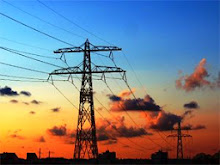The UK is missing out on the opportunity to recycle and reuse waste heat produced in the electricity generation process to heat our homes and business, a new report from the Institution of Civil Engineers (ICE) revealed today.
Currently, heat production accounts for 49 per cent of all primary energy consumed in the UK, far more than in the production of electricity or that used in the transport sector. The report, based on new research undertaken by the University of Southampton sustainability energy research group, states that the use of Combined Heat and Power (CHP) technology would allow the capture and re-use of waste heat produced in the electricity generation process, cutting energy consumption and carbon emissions.
“The truth is, that if half of the heat lost during electricity production could be captured, it would meet 25 per cent of the UK’s heat demand, dramatically reducing energy consumption, cutting costs and carbon emissions,” said member of ICE’s energy panel Dr. Keith Tovey.
“Whilst this level of capture and re-use is not possible under the current organisation of the sector – and there are technical difficulties that need to be addressed – there are immediate opportunities for recycling and re-use, particularly at a local level that could have a marked impact.
“What we need to do is look closely at introducing district heating networks in areas surrounding viable existing power stations in the UK and ensure we assess potential heat capture possibilities for any new facilities. In the longer term we need to consider the potentially huge benefits that decentralised CHP could bring to the UK. With the current generation of thermal power stations coming to the end of their lifespan, there is a real opportunity to vastly improve the efficiency of our energy sector and drastically lower its carbon footprint.”
The report explains that heat recovery from existing centralised power stations could meet 5% of our current heating demand by 2020. This would largely be achieved through the introduction of CHP and district heating networks at specific locations, where there is a significant population within a 10km radius of a viable power station, such as those at Drax, Ferrybridge and Eggborough.
According to the report, by far the most efficient method of heat capture is decentralised CHP and district heating, of the sort used successfully in Scandinavia and other parts of Europe where smaller power stations are located close to centre of population. ICE urges investigation into how a similar approach could work in the UK. In addition ICE would continue to encourage institution scale CHP schemes such as in hospitals and universities.
“It’s true that delivering decentralised CHP across the UK would require significant new infrastructure and a large reorganisation of the sector, but if we are to guarantee security of supply, whilst meeting tough carbon targets, radical change may be what is needed,” said Tovey
The report, Why Waste Heat?, is the second in a series of energy briefing papers produced by the ICE. It is based on research carried out by Southampton University.
“The truth is, that if half of the heat lost during electricity production could be captured, it would meet 25 per cent of the UK’s heat demand, dramatically reducing energy consumption, cutting costs and carbon emissions,” said member of ICE’s energy panel Dr. Keith Tovey.
“Whilst this level of capture and re-use is not possible under the current organisation of the sector – and there are technical difficulties that need to be addressed – there are immediate opportunities for recycling and re-use, particularly at a local level that could have a marked impact.
“What we need to do is look closely at introducing district heating networks in areas surrounding viable existing power stations in the UK and ensure we assess potential heat capture possibilities for any new facilities. In the longer term we need to consider the potentially huge benefits that decentralised CHP could bring to the UK. With the current generation of thermal power stations coming to the end of their lifespan, there is a real opportunity to vastly improve the efficiency of our energy sector and drastically lower its carbon footprint.”
The report explains that heat recovery from existing centralised power stations could meet 5% of our current heating demand by 2020. This would largely be achieved through the introduction of CHP and district heating networks at specific locations, where there is a significant population within a 10km radius of a viable power station, such as those at Drax, Ferrybridge and Eggborough.
According to the report, by far the most efficient method of heat capture is decentralised CHP and district heating, of the sort used successfully in Scandinavia and other parts of Europe where smaller power stations are located close to centre of population. ICE urges investigation into how a similar approach could work in the UK. In addition ICE would continue to encourage institution scale CHP schemes such as in hospitals and universities.
“It’s true that delivering decentralised CHP across the UK would require significant new infrastructure and a large reorganisation of the sector, but if we are to guarantee security of supply, whilst meeting tough carbon targets, radical change may be what is needed,” said Tovey
The report, Why Waste Heat?, is the second in a series of energy briefing papers produced by the ICE. It is based on research carried out by Southampton University.
Source: The New Civil Engineer



No comments:
Post a Comment